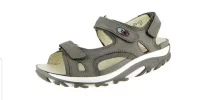- Time of past OR future Camino
- Frances 15,16,18
VdlP 23, Invierno 23, Fisterra 23
All I know is that I have been thru hiking longer than 90% of the forum members have been walking Caminos. I made the stupid mistake of buying into the advice of inexperienced hikers on my first Camino and wore Merrill shoes. Ended up with a severe case of plantar fasciitis, a Morton’s Neuroma, and Achilles tendinitis in one foot.
Got a good scolding from my podiatrist over it. I just finished walking the Invierno yesterday in my Vasque Goretex lined backpacking boots (lightweight, not mountaineering boots). No plantar fasciitis, no neuroma, no tendinitis, no blisters, and no wet feet even in pouring rain and walking through streams.
My poles helped, as always, to keep the strain off my knees on steep downs and losing my balance on stream crossings. Plus the movement keeps my hands from swelling.
To each his own. My advice is don’t take advice on the face of it and go out and try and figure out what works for you. Also remember that those thru hikers on the AT and PCT are in the kind of physical condition that the vast majority of Pilgrims are not. Most pilgrims have never even hiked or walked extensively, let alone carried more than a cheap bag with a bottle of water on their back. I say this based on the numerous number of absolutely basic questions asked on this forum.
Now tell us what you really think @alaskadiver
You make a lot of sense!



















